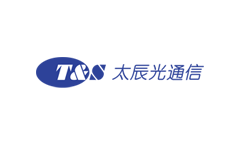Five Tests to Ensure the Fiber Patch Cord Quality

The quality of fiber patch cords affects the entire fiber-optic link. Each fiber patch cord must be strictly tested before leaving the factory. So what tests will a fiber patch cord manufacturer do to ensure the high quality of patch cords?
In order to ensure the quality of optical patch cords, the following five types of inspection tests are generally carried out before leaving the factory.
1. Fiber patch cord insertion loss/return loss detection
Insertion loss and return loss are key parameters that affect optical patch cords. The TIA standard clearly stipulates that the maximum insertion loss of the optical patch cord is 0.75dB (that is, the acceptable maximum value).
For most fiber patch cables on the market, the normal range of insertion loss is between 0.3dB and 0.5dB, and the range of some low insertion loss is between 0.15dB and 0.2dB. Return loss values are expressed in dB and are usually negative, so higher values are better, and typical specifications range from -15 to -60 dB.
According to industry standards, the return loss of Ultra PC polished fiber optic connectors should be greater than 50dB, and the return loss of bevel polish is usually greater than 60dB. PC type should be greater than 40dB. For multimode fiber, typical RL values are between 20 and 40dB.
The indicators of general carrier-grade jumpers are that the insertion loss is less than 0.3dB, and the return loss is greater than 45dB.
2. Fiber patch cord end face inspection
The cleaning of the end face of the optical fiber connector directly affects its performance. For example, scratches, pits, cracks, dust pollution, etc. on the end face of the optical fiber will cause the loss of the connection signal, resulting in poor insertion and return loss.
3. Fiber patch cord 3D interferometer inspection
3D interferometer testing is mainly to test the geometry of the fiber end face, and the parameters include curvature radius, vertex offset, fiber height, and so on. The end face of the fiber patch cord needs to be ground into a spherical surface, but the products manufactured by the actual production process cannot be perfect.
What are the appropriate values for the radius of curvature, vertex offset, and fiber height?
Therefore, the end face shape is specified in the technical standard, which includes the radius of curvature ROC, vertex offset, and fiber height.
According to the technical standards of the IEC organization, the reference value of the ROC radius of curvature is that the PC type connector is 10~25mm, and the APC type connector is 5~15mm. Vertex offset refers to the offset between the vertex of the curved surface and the fiber axis. If the vertex offset is too large, the deformation of the end face is enough to cause physical contact between the fibers. Therefore, the technical standard requires the vertex offset of the fiber jumper ≤ 50μm.
Fiber height refers to the height of the fiber end face relative to the ferrule end face. The fiber end face may protrude above the ferrule end face or may be recessed below the ferrule end face. The range of optical fiber height specified in the technical standard is -250~+250nm.
4. Fiber patch cord mechanical performance test
For
example, pull test, test optical patch cord under specified pull force
to verify fiber attenuation and fiber elongation strain safety factor.
5. Fiber patch cord ambient temperature experiment
It is necessary to test the performance indicators of optical fiber connectors under different ambient temperature conditions.
- +1 Like
- Add to Favorites
Recommend
- The Difference Between Fiber Patch Cord and Fiber Pigtail
- A Comprehensive Introduction to the Types, Male-Female, and Key Classification of MPO and MTP Fiber Optic Patch Cords
- What Are Simplex and Duplex Fiber Patch Cords?
- Classification and Instruction for Use of Fiber Optic Patch Cord
- METZ CONNECT Ultraflex500 patch cords –The ultimate solution in limited space
- What is the Minimum Bending Radius of an Optical Fiber Patchcord?
- What Are the Advantages of OM5 Fiber Patch Cables Compared to OM3 and OM4?
- What’s LC Uniboot Patch Cord?
This document is provided by Sekorm Platform for VIP exclusive service. The copyright is owned by Sekorm. Without authorization, any medias, websites or individual are not allowed to reprint. When authorizing the reprint, the link of www.sekorm.com must be indicated.





























































































































































































































































































































































































































































































































































































































































































































































































































































































